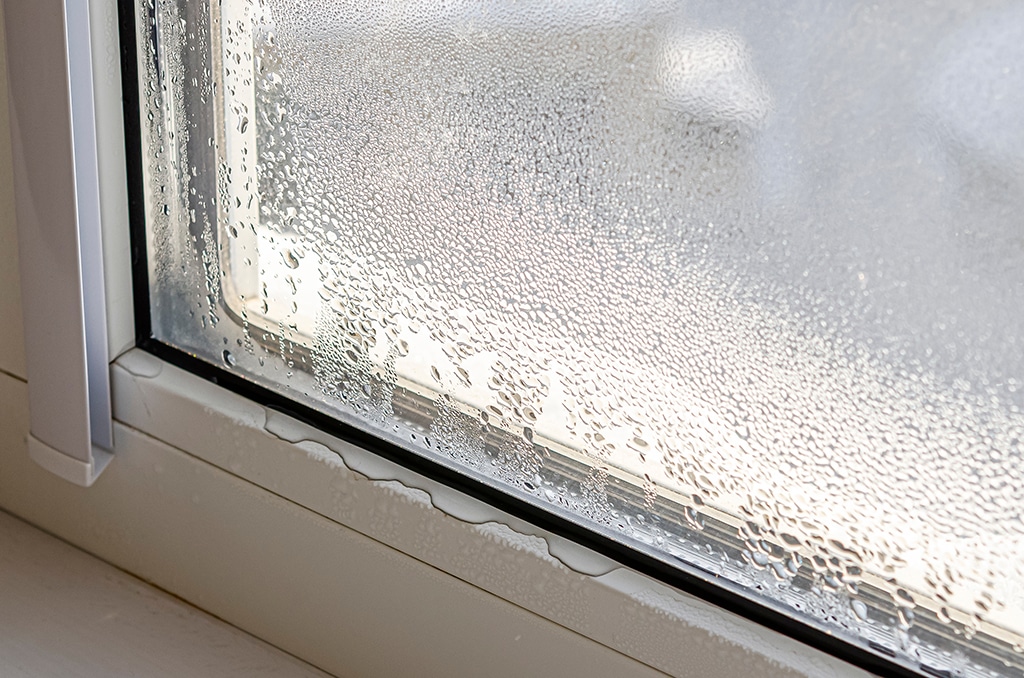
5 Things You Need To Know About Condensation On Home Windows | Kerrville, TX
Photo By Nataliia Yankovets at Shutterstock
Excess moisture and humidity have always been a huge problem that plagues many homeowners. This is no exception for those who live in the area. In fact, the warm weather here may even encourage condensation formation. It’s not unusual for many homeowners to notice condensation forming on their windows.
In some situations, this may be a sign that there’s something wrong with the windows. For example, it might be an indication that there’s a gas leak in your home windows. In fact, this is one of the first things that most homeowners worry about. However, gas leaks are not the only reason why condensation can form.
In many other situations, it might be temporary and something that you can ignore. We’ll look at some of the things that you should know about window condensation in this article.
#1. It’s Temporary Newly Installed Windows and New Construction
If you’re moving into a newly-built home or if you’ve recently had new home windows installed, you might notice some condensation forming on the surface of the windows. Fortunately, this is temporary and should stop in no time.
The cause of the condensation is because cement, wood, plaster, and other construction materials contain quite a lot of moisture. When these materials are first exposed to temporal changes and especially the first warm season in Kerrville, TX, moisture from the materials will flow out. After a short period of time or the first heating session, the moisture in these materials will gradually disappear, and you shouldn’t see this problem again.
#2. It Depends on the Window Type
Some home windows are much more prone to window condensation than others. Bay or bow windows are known for their ability to let in more sunlight. Although these windows are very aesthetically pleasing and can easily brighten up a room, they tend to collect a lot more condensation than other home windows, like picture windows. This is because these windows do not allow for more air circulation than other styles. These windows also typically pull away from the walls, which are properly insulated. Due to this reason, these glass panes tend to be a few degrees cooler in temperature than other windows.
If you’d like to prevent condensation from forming, you can try to insulate the area between the window head and the platform. Some homeowners may even want to add insulation above and below the window platform. If none of these solutions work, consider placing a window fan next to the windows in order to increase overall air circulation. You should see a noticeable difference in the amount of condensation that forms.
#3. The Window Frame Material Can Also Affect Condensation Formation
If you notice a one-inch strip of condensation forming at the perimeter of the window, it could either be a sign that there’s a gas leak or it could be because of the type of material that the frame is made of. If the window frame is made of metal or has metal components, the metal may transmit cold from outside the home to the inner glass. This will cool the glass surface and encourage condensation formation.
One of the ways to prevent condensation formation is to improve insulation properties around this area.
#4. There’s a Difference Between Indoor and Outdoor Condensation
You can also tell what the problem is based on where the condensation is located. Other than a gas leak where you’d also see condensation inside the windows, the other two locations where you’d see condensation formation are outside the windows and on the inner surface.
Condensation that appears on the outside of the windows is dew. It’s basically the same thing that you see on your windshields or on the grass on your lawn after a cool night. This type of condensation forms when the exterior surface of the temperature drops below the dew point of the air. You’ll also see more condensation on your home windows when the humidity is higher. In general, you’re more likely to see condensation like this in the spring and fall.
If you see condensation forming on the inside surface of your home windows, it could be due to leakage between the window frame and the sash. Warm air inside the house seeps in around the sash and gets trapped there. If you’re able to improve air circulation and ventilation in your home, it should reduce condensation formation significantly.
#5. Shades and Drapes Can Affect Condensation Formation
Another thing that you need to consider is whether you have any drapes and window shades over the windows. Drapes and window shades can exacerbate a condensation problem, as they may restrict air circulation over the glass surface. Because of this reason, you’re more likely to experience indoor condensation when the drapes are closed or when you pull the window shades down.
In order to mediate a condensation problem, open the drapes and pull the shades up on your home windows. This might not necessarily solve the problem entirely; however, you should see a visible difference in the amount of condensation that has formed on the windows overnight. After you’ve done this, you can also consider other methods to mediate the condensation formation.
Get New Home Windows Installed with First Place Windows
It’s important to deal with excess condensation as soon as possible because it can cause some pretty significant damage to the windows. In particular, it can cause the paint to peel from the sash and premature wear to the frames. Both of these issues can be rather pricey, if not time-consuming, to fix. Consider contacting a window installation company if you notice condensation forming on your home windows. The sooner that you deal with the problem, the better.
Learn more about window types, common window problems, and more by contacting a window installation company, like First Place Windows. For over a decade, we’ve provided affordable window installation services to those in cities in Texas, like Kerrville, TX. Call 210-955-9865 to reach us.

